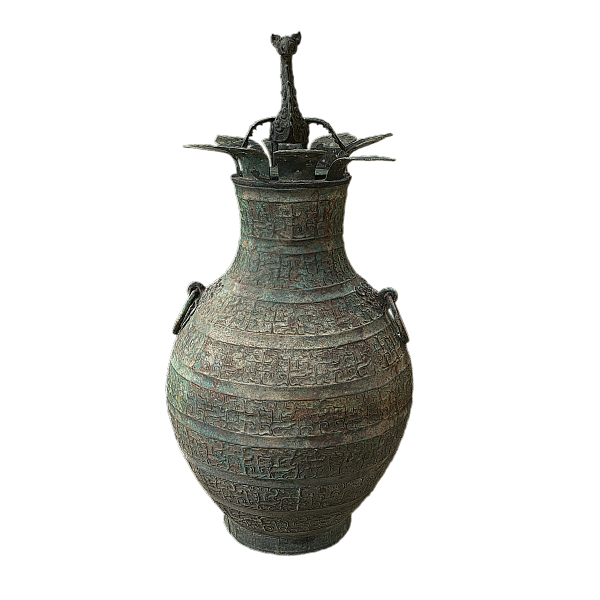Jade Pei Pendant in the Pattern of Four Dragons and Two Phoenixes
| Accession No. | R020635 |
|---|---|
| Period | Eastern Chou |
| Material | Jade |
| Findspot | Tomb No. 60 Liu-li-ko Site |
| Geographic Location | Chengguan Town, Hui County, Henan Province, China |
| Dimension | L. 10.8cm; W. 4.3cm |
Description
This jade pei pendant was discovered from Tomb 60, Liulige, Hui County, Henan Province interred with the deceased. It is categorized as a Significant Antiquities of the nation. This light green jade piece in the form of two phoenixes, it has a circular overall shape, and openwork carving that match up the contour and the decoration of the piece. The two sides of the pendant are symmetrical in decoration; thus, the phoenix on top and the dragon below share a body and the phoenix’s head is turned backward so as to intertwine with a sticking tongued dragon. All six creatures have detailed legs with scales and claws while the bodies of the dragons are decorated with slanted lines. Additionally, the curled upper jaws of the top dragons are detailed with scales and the bodies of the dragons on the backside are decorated with curls. On the top of the ornament, where the two dragon tails interlock, are two lashing holes; a third hole is placed at the bottom of the ornament where the two dragon heads meet. This decorative pattern, formed of four dragons and two phoenixes and a ring in the center, is not a common composition for a jade piece during Spring and Autumn. Judging from the style of the jiao-dragons, poking their tongues out and the slanted line decoration found on the piece, it is possible that the decoration on this pendant shows artistic influence from the Chu State in the south.
Due to the limit of the technique, the hollow part of this 3D model is not very precise. The model is for reference only.


